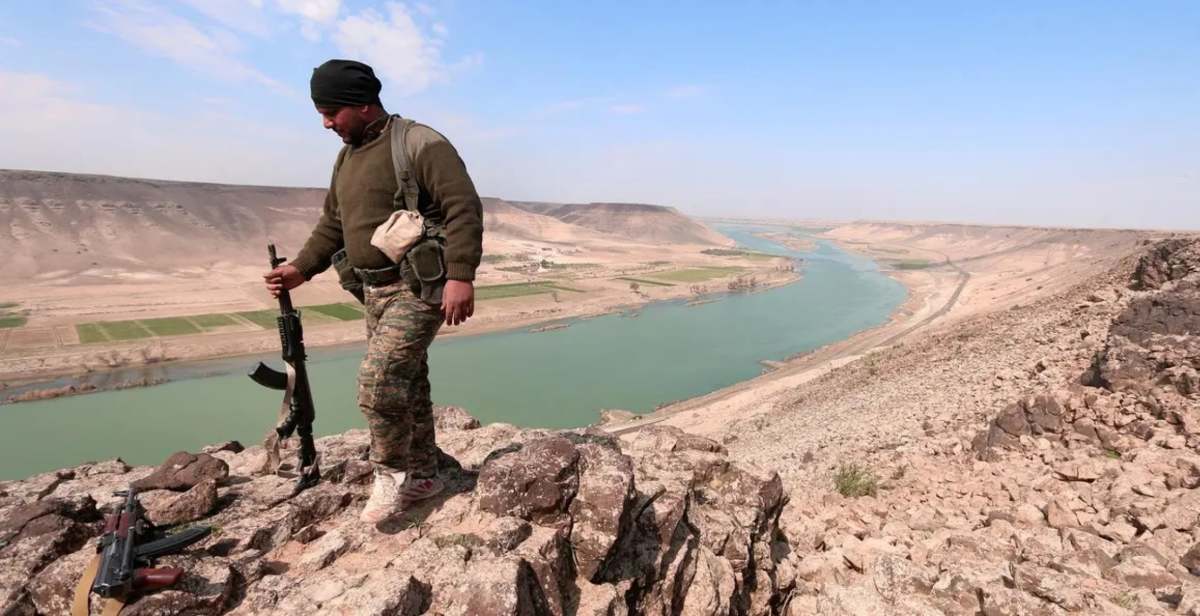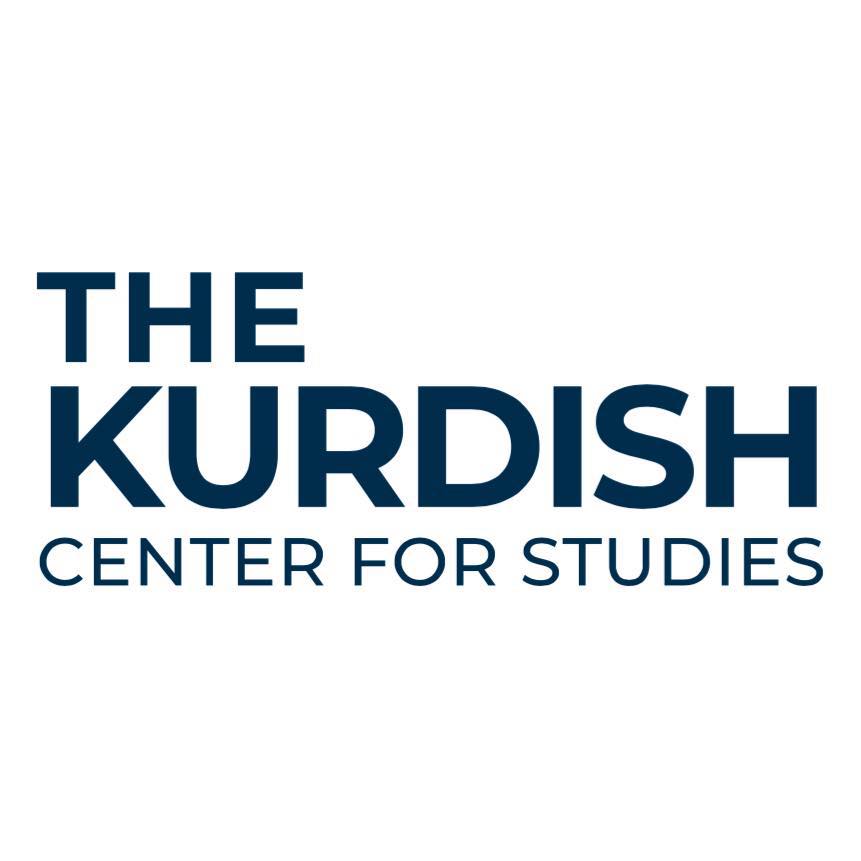Deir Ezzor: Epicenter for Iran & Assad vs US & SDF
By the Kurdish Center for Studies
Several days after Ismail Haniyeh’s assassination in Tehran, speculation arose regarding the nature and timing of Iran’s expected retaliation against Israel. Among the anticipated responses was the targeting of US bases and assets in Iraq and Syria, which was realized through a missile attack carried out by Iranian militias near the Conoco gas field, where a US base is located.
Meanwhile, the US Department of Defense reported that another drone attack on the Kharab al-Jir base, near the city of Rmelan, Syria, resulted in minor injuries to eight soldiers. The recent strikes followed a prolonged lull in attacks by Iranian militias against US sites after Washington’s severe response to the Tower 22 attack in Jordan and the targeting of US forces on January 28.
The limited and targeted nature of the Iranian attacks is interpreted as a message to the Joe Biden administration indicating the potential for escalating attacks and resuming a strategy of light and medium-intensity strikes against US assets in the region. This keeps US forces in a constant state of alert and threatens four vital US bases in northeastern Syria by planning to bomb them with suicide drones. To signal the possibility of escalating attacks, the offensive led by government forces, the National Defense Forces (NDF) militia, and tribal armed groups supported by the Iranian Revolutionary Guard Corps (IRGC) is a key component of Iran’s strategy to create disruption.
The Syrian regime’s involvement in the recent attacks on areas governed by the Autonomous Administration in the eastern Euphrates region of Deir Ezzor signifies the enduring influence of Iran in Damascus. Initially, Damascus appeared cautious about becoming involved in Iranian initiatives following the October 7 Hamas attack, likely to avoid provoking Israeli retaliation. This hesitation suggested a partial separation from the “axis of resistance” and a cautious departure from Iran’s concept of a unified front against Tel Aviv and Washington. However, the increased engagement by the Syrian regime in the Deir Ezzor assaults and its focus on targeting the Syrian Democratic Forces (SDF) along with civilians indicate a return to a more aggressive alignment with Iranian interests.
This is part of a strategic division of roles between Damascus and Tehran, with Iran taking responsibility for attacks on US facilities. In response to the regime’s actions, a US State Department official stated that the SDF remains “a capable and committed military partner, and we will continue to work with them to ensure that ISIS does not re-emerge.” This reflects the US military’s right to respond to threats against their mission to track down active ISIS cells in the region. One example is the coalition’s airstrike on Damascus-affiliated positions on the western bank of the Euphrates River. As part of the commitment to respond to recent Iranian provocations, the spokesperson reiterated that Washington is dedicated to maintaining its limited presence in northeast Syria “as part of a comprehensive strategy to achieve the ultimate defeat of ISIS.” Observing the pattern of previous Iranian attacks, it is evident that the US response was timely, part of a “risk management” approach adopted by US forces in eastern Syria.
The Syrian regime’s encouragement of tribal groups linked to Tehran’s new ally, Ibrahim al-Hifl, has deepened tribal divisions in Deir Ezzor. Its recent operations in eastern Deir Ezzor have led to the bombardment of civilian homes, resulting in the deaths of women and children, and devastating civilian livelihoods. Nonetheless, the largest bloc remains allied with the SDF amid tribal and civilian concerns about three primary risks in Deir Ezzor: First, Iran and its allies are attempting to ‘sectarianize’ civil society and manipulate sectarian dynamics, which opposes local anti-Iranian narratives. Second, there are fears surrounding the return of the Syrian regime alongside tribal figures seeking revenge against residents of the eastern Euphrates regions.

Based on experiences with the return of government forces and their affiliated militias to various areas of Syria, local communities have learned that the Syrian regime “does not forget and does not forgive,” through waves of arrests, assassinations, and poor service provision as punitive measures against local populations. Third, ISIS tends to resurface in the aftermath of conflicts, exploiting security disruptions to gain more operational space and expand its psychological influence in certain areas. The organization has previously imposed financial contributions on civilians in certain villages in Deir Ezzor, symbolically establishing a form of subjugation over local communities to its growing power and suggesting an imminent return if security conditions change.
Past experiences indicate that the timing, scope, and intensity of attacks on the Autonomous Administration areas in rural Deir Ezzor, along with assaults on US bases, are linked to the urgent messages Tehran wants to relay to Washington, with coordination between Damascus and tribal groups guided by Iranian Revolutionary Guard Corps (IRGC) commanders. What diminishes the effectiveness of these tried-and-tested Iranian tactics are factors beyond the failure of local communities in the eastern Euphrates to respond, aimed at transforming these attacks into a prelude to widespread instability that could encircle US bases.
Washington’s ability to respond swiftly and inflict direct damage on the command centers of the Revolutionary Guard in Deir Ezzor may reduce the likelihood of sustained attacks. Concurrently, the Syrian Democratic Forces have embarked on an offensive—potentially unprecedented in terms of method and effectiveness—on the western side of the Euphrates River, inflicting significant casualties on the militias and individuals involved in attacks on Autonomous Administration areas in eastern Deir Ezzor.
Meanwhile, Damascus understands that overly engaging in an unnecessary war at this point, combined with its besieged forces in the cities of Hasakah and Qamishlo, places it in a costly and exhausting confrontation. This renders its attacks temporary and ineffective, providing a free service to Tehran, albeit a costly one for the local population, impacting their stability, safety, and means of livelihood.
The fact that the attacks in Deir Ezzor serve merely as another message from Iran to the United States is underscored by the challenge of making northeastern Syria an effective venue to exert pressure on the Biden administration concerning the situation in Gaza. In the initial months of the Gaza conflict, Iran hoped that attacks by its affiliated militias in Iraq and Syria would compel the US President to adopt decisive positions against Benjamin Netanyahu’s government in Tel Aviv. Although Tehran recognizes that such pressure cannot hasten a breakthrough regarding Gaza, nor will it lead Washington to make withdrawal decisions from Iraq and Syria, it will not deter Iran from continuing to leverage this card.
On the other hand, Damascus recognizes that the “surplus of power” it perceives from initial Arab and potentially Western openness should not lead to a zero-sum confrontation in Deir Ezzor or an indirect conflict with the US. Furthermore, reliance on revenge-driven tribal groups suffering from internal discord cannot be a reliable asset in its battle against the SDF and the allied civil society, even if the attacks are repeated in the future.




Comments are closed.